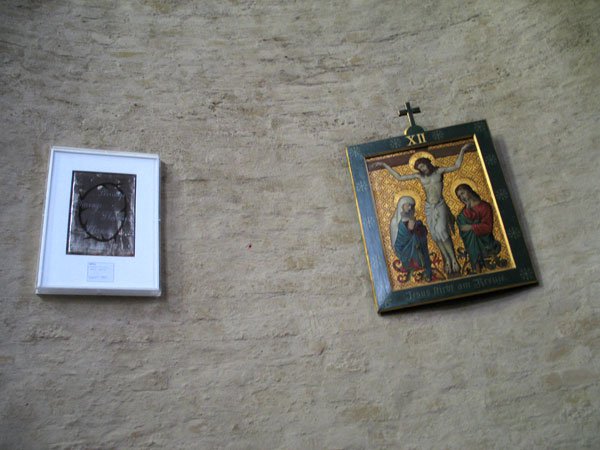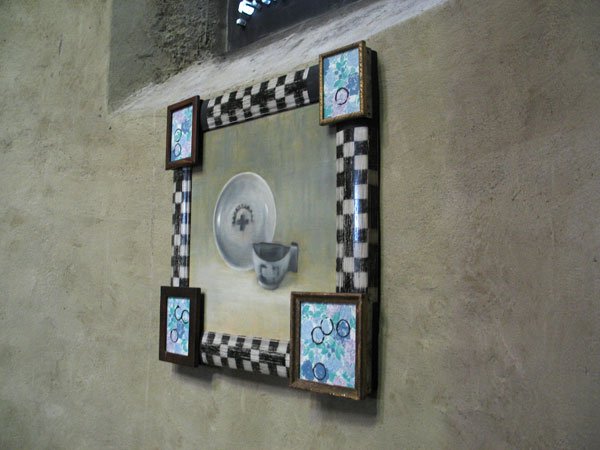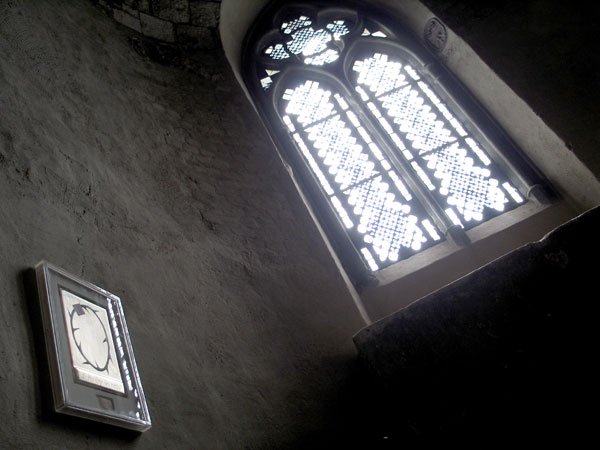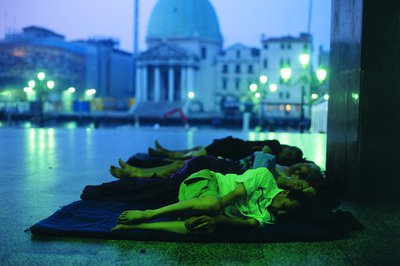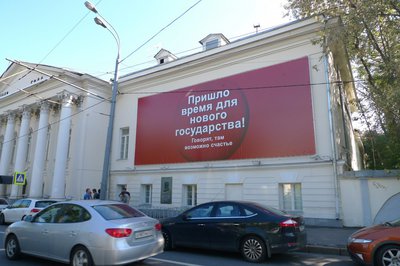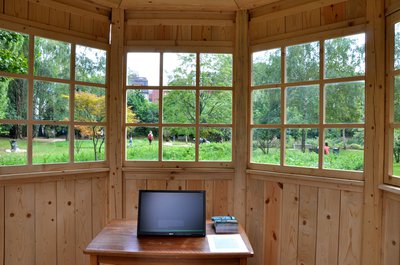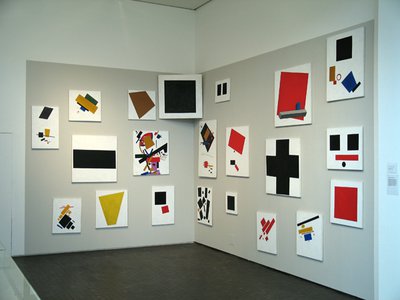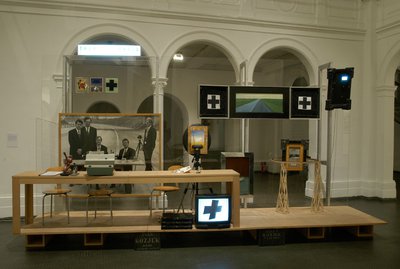Review of IRWIN's exhibition in Saint Gereon's Church in Cologne by Hanno Reichel
ICONS - IRWIN exhibition in Saint Gereon's Church in Cologne
As part of the religious, cultural and social events accompanying the current "Weltjugendtag (World Youth Day) 2005" in Cologne, a small exhibition of IRWIN works takes place within the mediaeval walls of "Saint Gereon's Church" in Cologne these days.
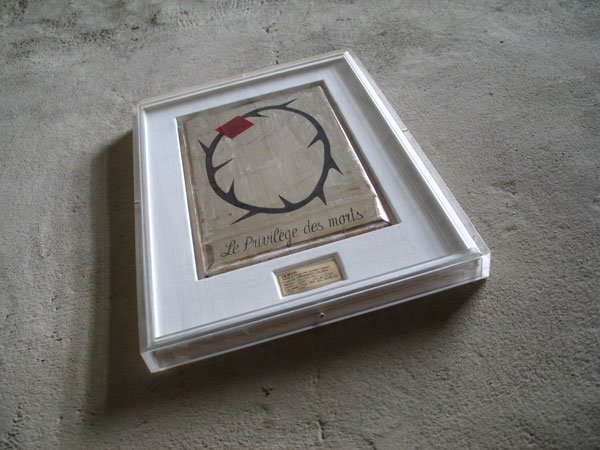
 Irwin, Les privilieges des morts
Irwin, Les privilieges des morts
Differing from to the previous larger-scaled IRWIN exhibitions in Germany, only some six pieces of work (mainly relatively new images and objects from the "ICONS" series of 2002) are shown, but the exceptional surrounding of the church's interior and the most interesting placation of the images within this sacral surrounding makes the exhibition a very special "Gesamtkunstwerk"-experience nevertheless.
Concerning the works themselves, the newer "ICONS" seem to continue the already observed development to more clear and simple aesthetics, restricted to most elementary symbols, colours and forms in the images of IRWIN. A good example for this strategy might be the combination of the Christian "crown of thorns" with Malevich's suprematist "red square" in "Le privilege des morts", symbolically either cutting or enhancing the eternal and perfect circular of life, death and resurrection by a constructed futurist element.
Like the images, also the frames, which have always been an important element in IRWIN's works, are subject to changes accordingly: Superficially speaking, the monstrous dark frames of the dark ages get replaced by sophisticated and (optically) frameless glass-constructions of the 21st century. But -inside the timeless IRWIN universe - where is the difference between the secure ancient life within a square surrounded by strict heavy borders and life within the (only virtual) freedom of global information and sterile high-tech?
Having in mind the references to religious symbolics in the works of IRWIN (especially in "ICONS"), the placation of these images within a church's interior may here serve either just as an amplification of the image's intended effect on the recipient or otherwise as a real-time experiment dealing with the present and future of iconic art and religious symbolism. Maybe the confrontation of the churchgoers with these pieces of art might relate to the exhibition of the earlier works of IRWIN (with its coalmining references) within an active coalmine in the Trbovlje-area some years ago in the 90ies. Up to now, there are no reactions -neither positive nor negative- documented in this case of a (friendly) taking of over of a sacred surrounding by pieces of “profane” art. But: Maybe the fact that there is no reaction at all is more significant to the current state of art and religion than any reaction could have been...?
To strengthen the effects of setting the images in correlation to the church's general surrounding even more, some of the IRWIN-works are placed in direct vicinity of the mediaeval images of the "Way of the Cross", giving both parts of these interesting pairs a totally new effect. Whether these placations were absolutely intentional and meant to create a direct link between these certain pairs of images or rather more or less a coincidence and dictate of architectural compulsion might remain unknown forever. Anyway: The possible interpretations emerging from these "pairs" of iconographic artwork from two different times and spaces appear to be as indefinite as the historic symbolism of the single works themselves.
If that is the case, IRWIN has accomplished the squaring of infinity.
